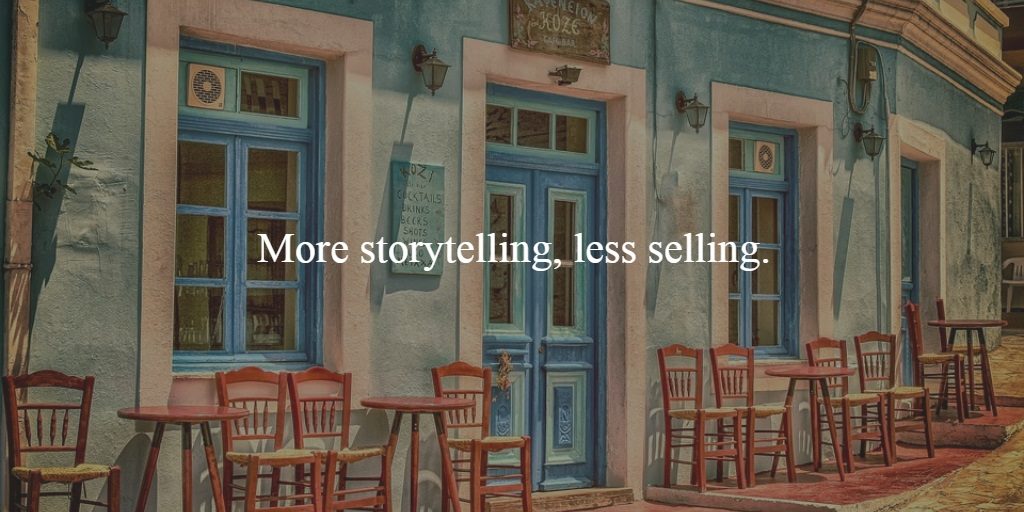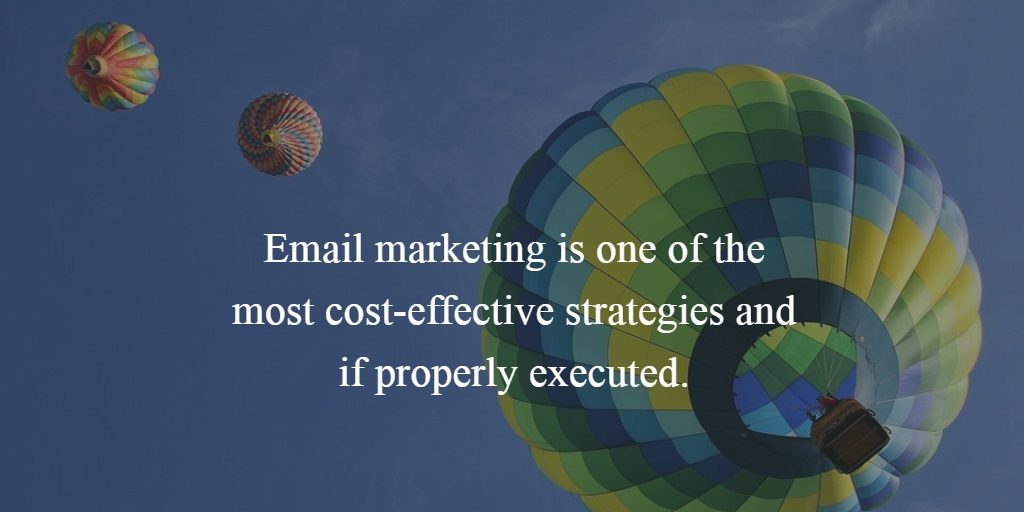The travel and tourism industry has been steadily growing, and according to stats, it’s one of the fastest growing sectors with bookings reaching $1.6 trillion in 2017.
But, apart from being very lucrative, this market is also a highly competitive and saturated one, which means you have to tap into different marketing strategies if you want to reach and attract your potential customers.
A plethora of options to choose from has definitely spoiled consumers, and if you don’t provide the best offer at a competitive price, they’ll go to your competitors.
However, before they even get a chance to take your services into consideration, your potential customers first need to find you in the sea of tour operators and travel companies.
Here’s how travel SEO, content marketing and marketing automation strategies can help you achieve just that: be found.
Dominate Search Marketing With SEO
Search marketing is the practice of improving your online presence, visibility and website traffic through different paid and unpaid strategies involving search engines.
Paid traffic refers to visitors who land on your website by clicking on ads that you have set up and that you pay to run. Also known as Google PPC Ads, they cost you every time someone clicks.
SEO is a set of different tactics that you can use to optimise your website for better rankings and help your customers find you through organic Google searches.
Your main goal should be to rank as high as possible in Google search so that you’re among the top search results that appear before your potential customers’ eyes when they’re looking for their next vacation.
For example, 75% of people never even bother to scroll to the second page of search results, which means that you’ve only got a 25% chance to be noticed if your website doesn’t pop up among the top 10 search results.
Check out our SEO case study for a travel company to get a clear picture of what we’re talking about.
Let’s discuss the most important elements of SEO for travel websites and how to make them work for you:
Travel Keywords
A journey of a thousand miles begins with a single step, as the proverb says, but in this case, your potential customers’ journey begins with a keyword, that is, the search phrase they use in order to find the best deal for their trip.
Depending on what services you offer, you need to think of the right words that your potential clients search for and use them in different sections of your website.
This can be tricky, as you’ll have to understand the search intent behind every query.
Namely, Google has developed sophisticated algorithms to pinpoint what users mean when they type a particular search phrase into the search box.
There are three types of search intent:
- Navigational, when a searcher wants to find a particular site
- Informational, when a searcher is looking for information
- Transactional, when a searcher is ready to buy or perform another activity online
It’s essential to cover all these three types of search intent with your content, so that you show up at each stage of the buyer’s cycle, and are there to answer whatever query: be it informational or transactional.
Bear in mind that many people use broad and general search terms when they start researching their next holiday destination, and then gradually narrow down their search until they’re ready to make their purchasing decision.
Apart from search intent, there’s another important factor to bear in mind when deciding about your keywords – search volume.
In layman’s terms, search volume is the number of times people search for a particular keyword within a month, which means there are high-volume and low-volume keywords and phrases.
Which ones should you opt for?
Although seemingly pretty straightforward, this choice isn’t as simple as that. At first glance, it’s only logical to aim to rank for popular, frequently searched keywords.
For example, “cheap flights”, “travel websites”, or “travel packages” are on this list, and as you can see, they are rather general.
But let’s not forget that all your competitors and industry behemoths are also trying to rank for these keywords. This makes it very difficult for a small travel website to stand out.
On the other hand, low-volume keywords tend to be specific or long-tail. The point is that they won’t bring you too much traffic, but the visitors who come to your website with the help of these keywords are qualified, that is purchase-ready.
There’s something else about these longer and more specific keywords that’s worth mentioning – people usually use them for voice search.
And in case you didn’t know, 50% of all searches will be conducted via voice by 2020, therefore in order to stay ahead of the curve, make sure to leverage long-tail keywords.
Other factors to take into consideration and analyse include keyword difficulty, total search potential, and the cost to create each asset.
On-Page and Off-Page SEO
On-page SEO is the practice of optimising your overall website and its individual web pages for search.
On the other hand, off-page SEO refers to all the different activities that you engage in outside your own website that will help you improve your rankings.
You need to have both these strategies in place in order to boost your rankings.
- On-page
- When it comes to improvements you can tackle on your travel website, you should start with optimising your meta titles and meta descriptions. Use your main keywords in your meta titles, and pack them with an emotional appeal that will get your potential customers to click – like X Insanely Adventurous Trips to South Africa. As for your meta description, it’s important, to sum up the contents of your page and say exactly what your visitors can find if they click on it.
- Include the “people also ask” questions and simple, straightforward answers to them within your content in order to rank for snippets.
- Short, scannable paragraphs and bulleted lists can help you increase the readability of your website, which is something that both Google and your visitors will appreciate.
- Improve your internal linking structure and always include links to relevant pages in your content.
- Identify broken links and dead pages, and fix them.
- Create as many landing pages as possible, and make sure you’ve got no more than one offer on each of them.
- Analyse what keywords your top pages are almost ranking for – that is pages which hold positions between 11-20 in Google search results, and optimise these pages for additional keywords.
- Speed up your load times and reduce your bounce rate.
- Include a lot of multimedia – images, videos, and infographics can do wonders for your SEO, as people are more likely to pay attention to these content types.
- Add social media buttons to every page and make sharing your content easy.
- Post long, engaging content that is relevant to your visitors, and make sure that your main keyword appears within the first 100 words of your blog post.
- Off-page
- Building backlinks is one of the most important off-page SEO tactics, as it promotes your content and strengthens your online reputation. Namely, if different reputable and trustworthy sources are pointing to your website, that is, if there are links to your website in their content, Google will take it as evidence that your website is credible and respectable too. In a way, these backlinks are vouching for your reputation, which is why it’s of critical importance that you build only high-quality links, and remove any links from shady and spammy websites.
- Building links can be particularly challenging in the travel industry, mainly because it’s so fiercely competitive. Luckily, there are different ways to promote your business in different outlets. Some of them include an interview with your CEO given to a respectable portal or big outlet; a podcast in which your CEO or a member of your team is featured; creating an infographic that others want to include in their blog posts; building a travel calculator that people find useful and share on social media or their own websites; teaming up with a business from a complementary industry and being featured on their website; or writing guest posts for other websites and including a link to your own website.
See our Tourism SEO guide for more information.
Content Marketing
Whether you do it yourself or hire an Irish SEO Agency or content marketing agency, producing informative, educational and entertaining content for your travel website is a must.
Travel guides, travelogues and brochures are somewhat of a staple in this industry, and by publishing a lot of content, you can attract new customers. It’s even easier nowadays when you can add different twists to your content and make it even more appealing – videos, high-quality images, VR and AR.
More storytelling, and less selling should be your motto when it comes to creating content for your website.
For example, landing pages that aren’t particularly salesy and pushy, with a lot of detailed information which will provide a comprehensive answer to the question from the search query might seem like a counterintuitive tactic.
But, by including internal links and a well-crafted and enticing CTA, you can set your visitors in the right direction and get them to book a holiday or a plane ticket on your website.
Apart from regular posts on your blog, other content marketing pieces include maps, interactive infographics, visual data, product or service pages, downloadable ebooks and guest posts that we have already mentioned.
As the travel industry is particularly visually appealing, getting hold of high-quality original images is something that will help you distinguish yourself from your competitors. Check out our What Does a Content Marketing Agency Do? post for more information.
Email Marketing
Your content can serve another purpose – it’s an excellent lead magnet.
So, gating your blog posts and making them available only to those ready to register and provide their email address will provide you with another opportunity to reach your target audience.
Email marketing is one of the most cost-effective strategies and if properly executed, it can help you nurture your potential customers and help them make a purchasing decision.
You can treat email marketing as another type of content marketing, so it’s important that your subject lines and messages are carefully crafted and tailored to your audience.
To make this possible, it’s important to segment your audience based on different demographic, financial, behavioural, and numerous other parameters and reach out to them with content that they will find interesting.
In other words, it’s very unlikely that an adventure-packed trip to an exotic location will be attractive to a family with a couple of toddlers, so make sure to learn as much as possible about your potential customers to make this strategy work.
Email Marketing Automation
Given that it’s virtually impossible to write and send every single email personally, you’ll need to take advantage of email automation.
There are various tools and platforms that can help you craft, schedule and launch your highly-personalised email campaigns at the right time, and with them, you can automate your email efforts without sacrificing personalisation.
Such tools allow you to group and organise your contacts based on the different preferences they might have. This means that you can split them according to their location preferences, budget or travel frequency.
It’s a good idea to engage your customers with a personal monthly newsletter in which you can, for example, pick one of your most popular packages, describe it, and answer some of the most common questions.
Peculiarities of the Travel Industry
To better understand this market and promote your travel business, we should discuss in what ways the travel industry is different from other industries.
- It’s seasonal. A lot of packages, bookings and flights are sold seasonally, which means you should make a plan of your marketing activities and group them around particular events, holidays or destinations. Check your metrics to find out when spikes occur throughout the year and implement your findings in your seasonal strategy. For example, people will book their Easter getaway a couple of months ahead, but some events will generate a lot of interest while they’re taking place, which means you might experience a surge in bookings for a particular event one year in advance. That’s why you need to monitor your metrics regularly and draw smart conclusions.
- Its products are expensive. An average vacation or even a flight to a nearby country can come with a hefty price tag in comparison to standard monthly expenses. That’s why your customers are more careful when it comes to making their purchasing decisions, and they want to make sure to find the best deal. All this means that your sales cycles are comparatively long, as spur-of-the-moment decisions aren’t common. A way to overcome this challenge and capture your customer’s attention before a competitor snatches them away is by offering monthly payment plans. These can significantly shorten your sales cycle and help your potential customers decide to book.
- You’ll be scrutinised. Given that travel is expensive, you can bet that your customers will research your company in detail before opting for your services. A detailed FAQ section in which they’ll find all the answers they need is a great way of helping them make an informed decision. A chatbot is also an excellent idea. That way, you’ll engage your visitors and provide them with all the relevant information instead of letting them wait for your travel reps to be available.
- Build trust. Another thing that can prevent them from pulling out their credit cards is their fear of whether the transaction is safe. Since your customers provide their sensitive personal information and credit card numbers, it’s crucial to let them know that they’re safe from identity theft, hacking and cybercrime. Trust badges throughout your website, and particularly on the checkout page will build trust and convince them that their personal details are safe with you.
- Social proof is a must. Your happy customers are your best brand advocates. Given that people spend a lot of time and money trying to find the best package or deal, it’s only logical that the positive experiences of others will encourage them to click that Buy Now button. Make your requesting reviews process seamless, and if possible, incentivise your existing customers to put in a good word for you.
- Social media marketing is indispensable. Promoting your travel business and engaging your customers on social media can’t be ignored. Facebook, Instagram or Pinterest can help you spread the word about your amazing offers, and help you get in touch with your potential customers more easily and in real-time. This is why you will need to have a well-thought-out social media marketing strategy. But, it’s a rookie mistake to try and use all the available social media channels at once. This way you’ll only spread yourself too thin and underperform. Instead, focus only on the channels that your target audience prefers.
As you can see, these marketing strategies can make a world of difference when it comes to the success of your travel business and website. However, we’ve only just scratched the surface and unearthed the tip of this huge iceberg, as there’s so much to travel SEO and content marketing to take into consideration when promoting your business. In case you need some advice or guidance, feel free to reach out and we’ll help put your travel business on the map and throw in signposts for your customers to find you easily and without any wandering around.

I am the founder and manager of BeFound SEO and the main consultant. I started offering SEO services back in 2007 when I had to explain SEO, as most people had no idea what it was and how much it could help their business online. I still love seeing the results from SEO.
When I’m not creating great strategy, I am usually out hiking up a mountain.
Connect with me on the links below.




